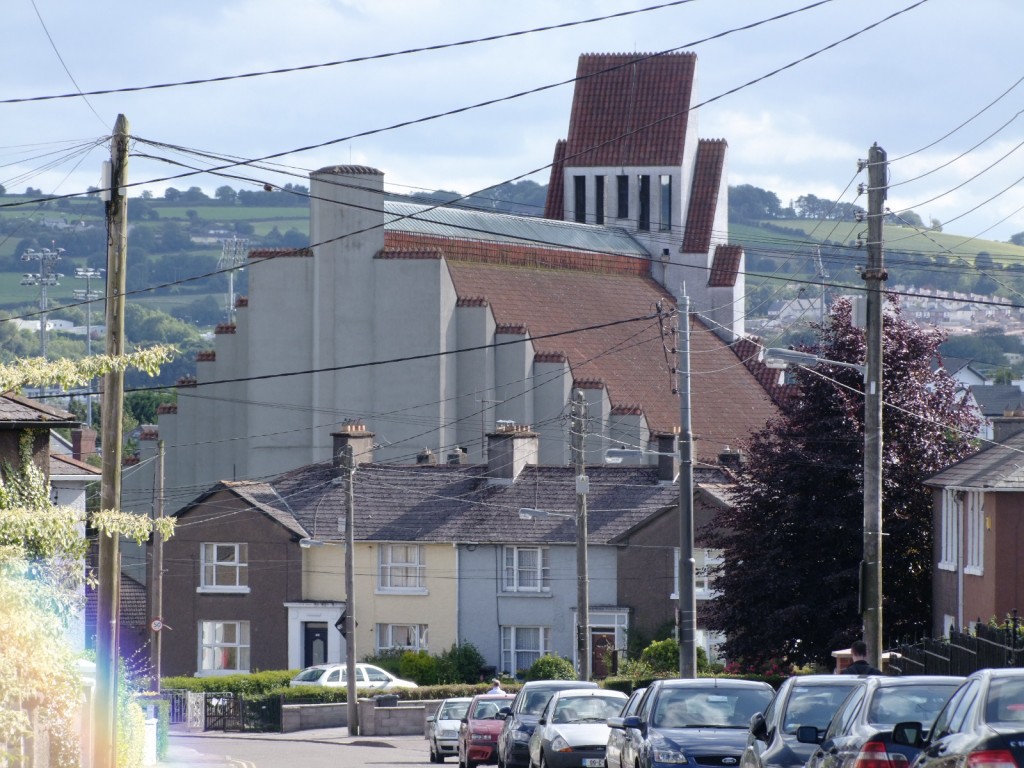
Kieran’s Our City, Our Town Article,
Cork Independent, 25 August 2011
Lecture: Creating an Irish Free State City
Continuing with the showcasing of some of the work I am pursuing for heritage week, there are two events over the next week, which engage with aspects of Cork’s development in the 1920s and 1930s. The first event is a historical walking tour of Cork City Hall on this Saturday for Cork Heritage Open Day and the second is a lecture on Cork in the 1920s and 1930s for the South Parish Historical Society.
It’s difficult not to be enthused by what was achieved in Cork during the 1920s and 1930s. I have documented aspects of this era in this column over the last number of months by exploring the twentieth century heritage on the Carrigrohane Straight Road. However, there is much I am still researching and trying to come to grips with. Indeed, the City is blessed with an enormous newspaper clippings archive in Cork City and County Archives in Blackpool, where 90 years ago someone cut hundreds of columns out of Cork Examiner newspapers to create scrapbooks. Negotiating ten years of them one begins to see one strong element shining through – the strong vision and ambition that the management of Cork Corporation had at that time. The opening of City Hall 75 years ago on the 8th September may seem a pinnacle of success in those times but there were in my opinion other impressive strands to the Corporation’s work.
The slow rebuild of the half burnt St. Patrick’s Street is evident in the archive’s collection of letters from the Corporation asking for updates from the shopkeepers. The debate by City councillors to rebuild the burnt out City Hall also echoes strongly in the stream of debate in the makeshift Council Chamber in the lecture theatre of the Crawford Art Gallery. However, with the dissolution of the Council in 1924, the young national government appointed a city commissioner in the form of City Administrator Philip Monahan.
Philip Monahan was appointed in November 1924. In the early 1920s, he had being Mayor of Drogheda and a member of Louth County Council. He was also a commissioner in Kerry by 26 years of age. Finding his feet quickly in Cork, by the following March 1925, he was talking to the press and setting out his goals; Using some of Westminster’s compensation package for the burning of the city, he sidelined the rebuilding of City Hall, not all of it, he did set about getting new designs; However, he was to set aside £25,000 for the installation of a new filtration plant at the waterworks, invested £50,000 for asphalting 68,000 square yards of streets, pushing for the completion of St. Patrick’s Street, the re-building of Parnell Bridge, the purification of the city’s sewage schemes, the replacement of the eighteenth century culverts under St. Patrick’s Street to create new sewers, strove to create a new cattle market for the city and took over of management of what the press called the ‘Mental Hospital’ in Sunday’s Well.
Being invited to lecture on aspects of democracy and local government in the new Irish Free State, Philip Monahan called for the adoption of Cork: A Civic Survey. In 1926 the Cork Town Planning Association produced the latter document, which provided a debate template on the City’s slum conditions. The founding of the Cork Town Planning Association in 1922 marked the beginning of a serious attempt to deal with the problem of the dreadful housing conditions in parts of the Middle Parish and the areas around Barrack Street, Shandon Street and Blarney Street. Indeed in March 1925, Monahan pitched that he would invest £70,000 for the provision of 200 houses in Turners Cross in the immediate interim. He also put down his marker that he was to build efficiency in the local public sector. Indeed with the threat of using direct labour, he pursued an agenda to reduce the wage of Corporation workers to 4s. 6d. per week.
In an age of a non welfare state, it is also interesting to read of work of the Corporation Schools Medical Officer Dr. Annie O’Sullivan. By 1930 arrangements had been put in place for the treatment of ear diseases and defects and diseases of the eye, nose and throat. In 1933, 8,139 children had been checked at clinics at city schools. School meals were given of hot cocoa with bread and butter or jam or currant buns with milk in some schools. The Cork Children’s Fresh Air Fund, established in 1932, helped 500 children. In 1933, 442 children, 229 girls, 213 boys (5 to 14 years of age) were sent to Rostellan, Rathcormac, Ringaskiddy and Youghal and housed there for a fortnight. The initiative was funded by concerts, flag days and garden fetes. These were difficult and stressful times and also times where people worked harder to mind their families and survive. But certainly the array of ideas put forward by Monahan and his team makes for interesting reading in revealing their determination, realism and ambition in making the City a better place to live and work in.
Kieran’s Events:
Saturday, 27th August 2011, 1.30pm; History and legacy: A historical walking tour through Cork City Hall, meet at Cork City Hall, Anglesea Street entrance. Booking at 021 4924717.
Wednesday 31st August 2011, 8pm; Creating an Irish Free State City, Cork in the 1920s & 1930s in association with South Parish Historical Society, South Parish Community Centre.
Captions:
605a. The imposing Christ the King Church in Turners Cross opened in October 1931 overlooking Capwell Road houses, which got their first Corporation tenants in April 1928 (picture: Kieran McCarthy)
605b. Photograph of Philip Monahan, City Manager in a late 1920s Cork City Hall diary (source: Cork City Library)
